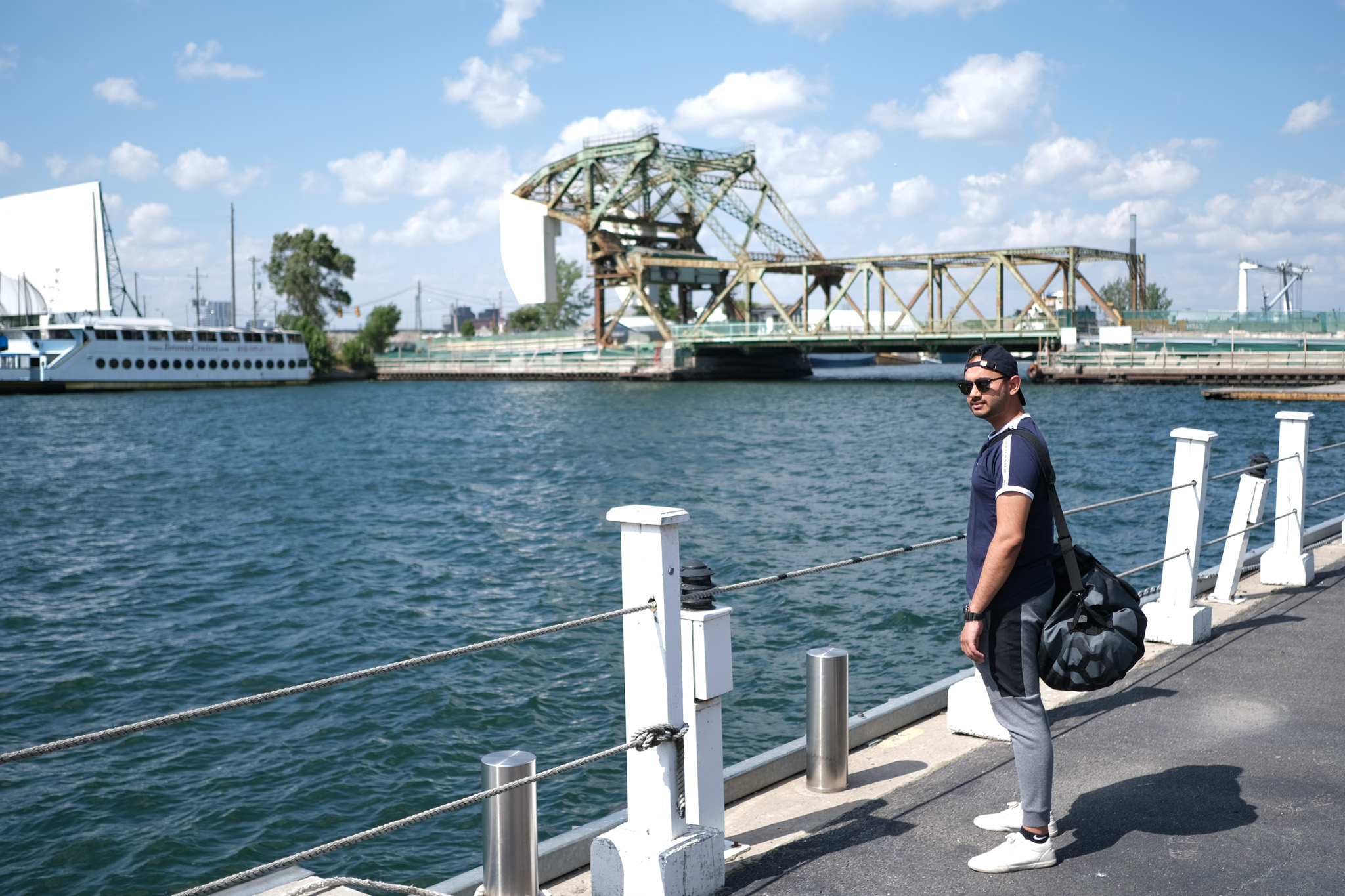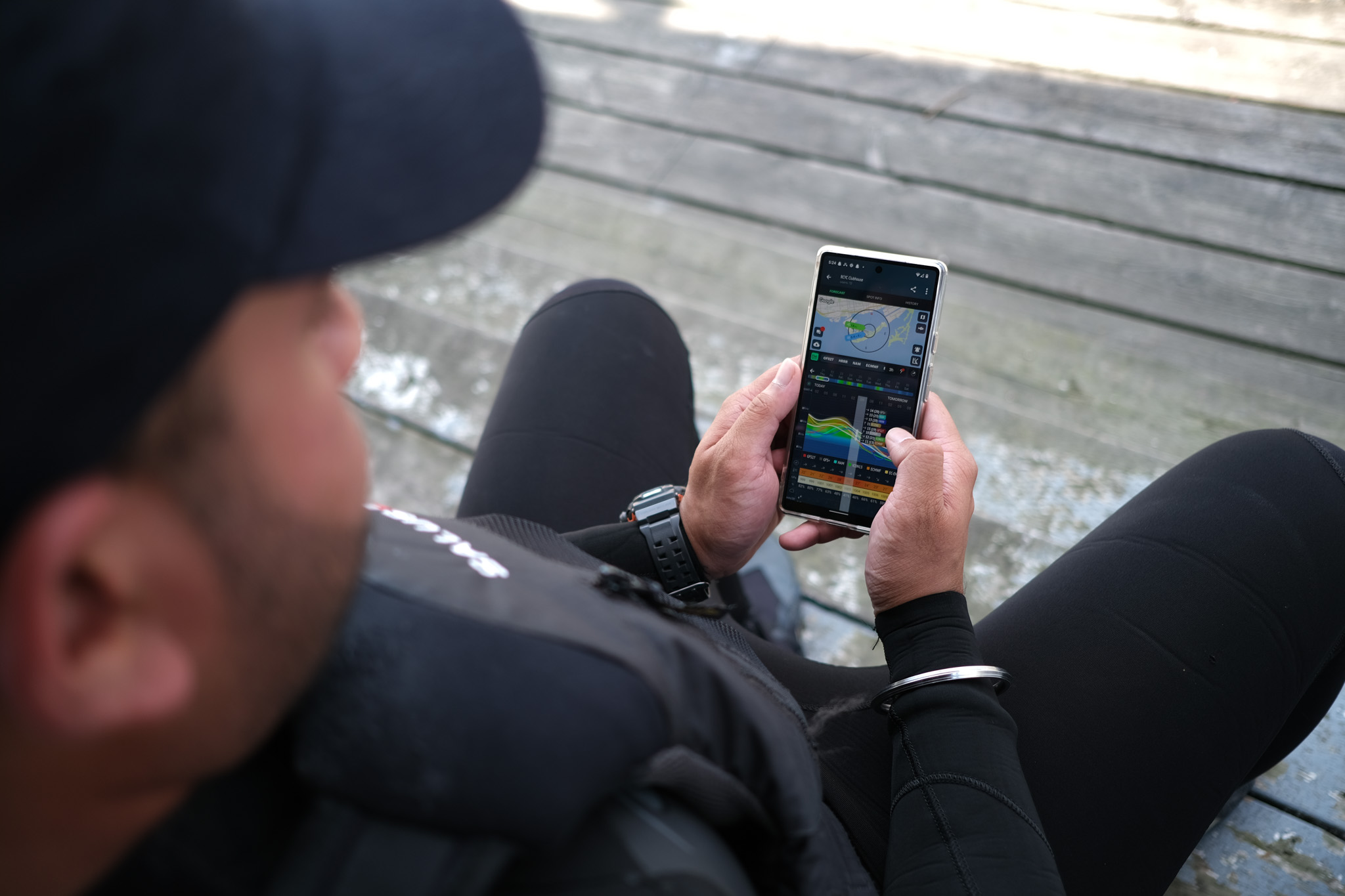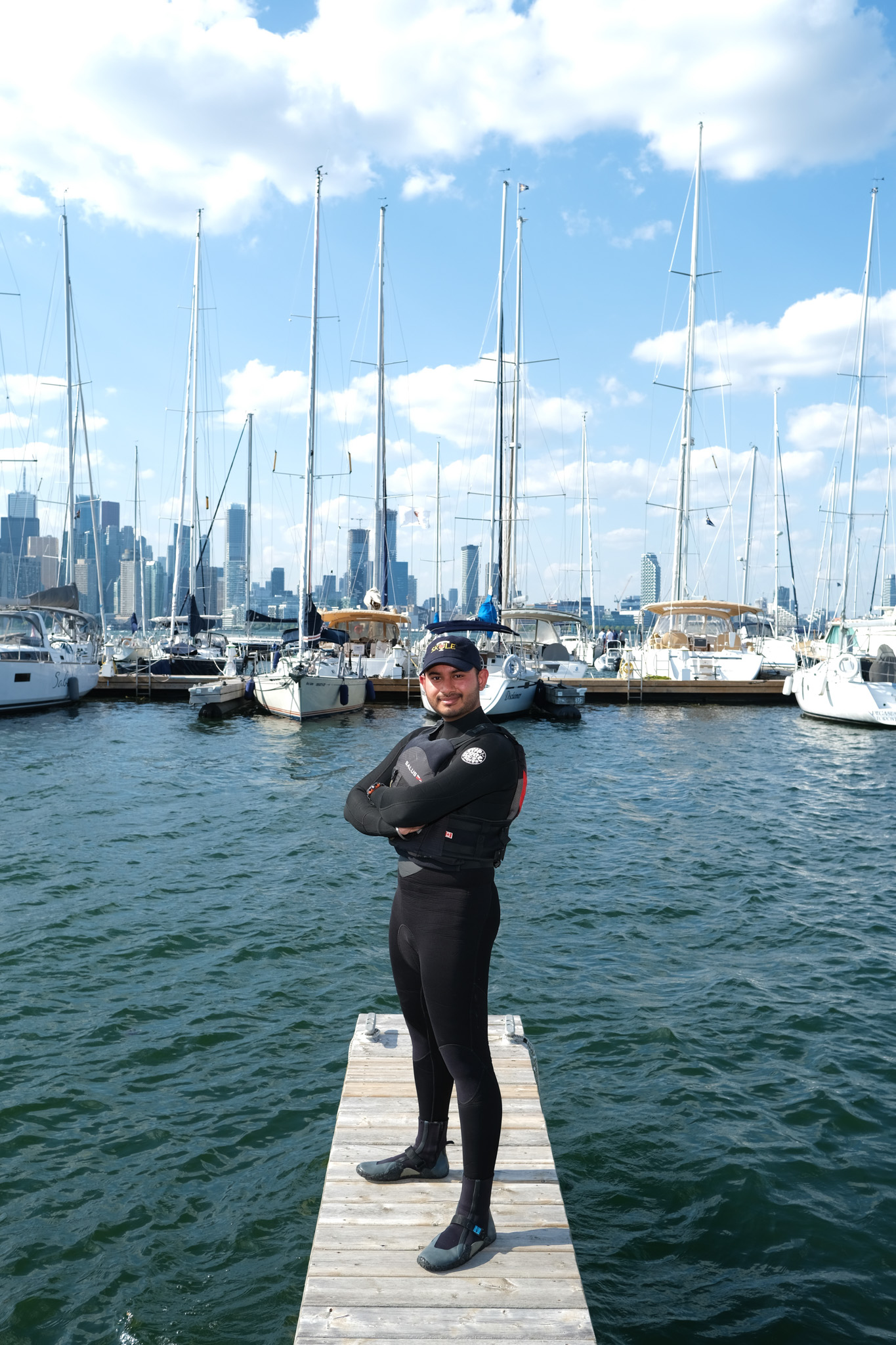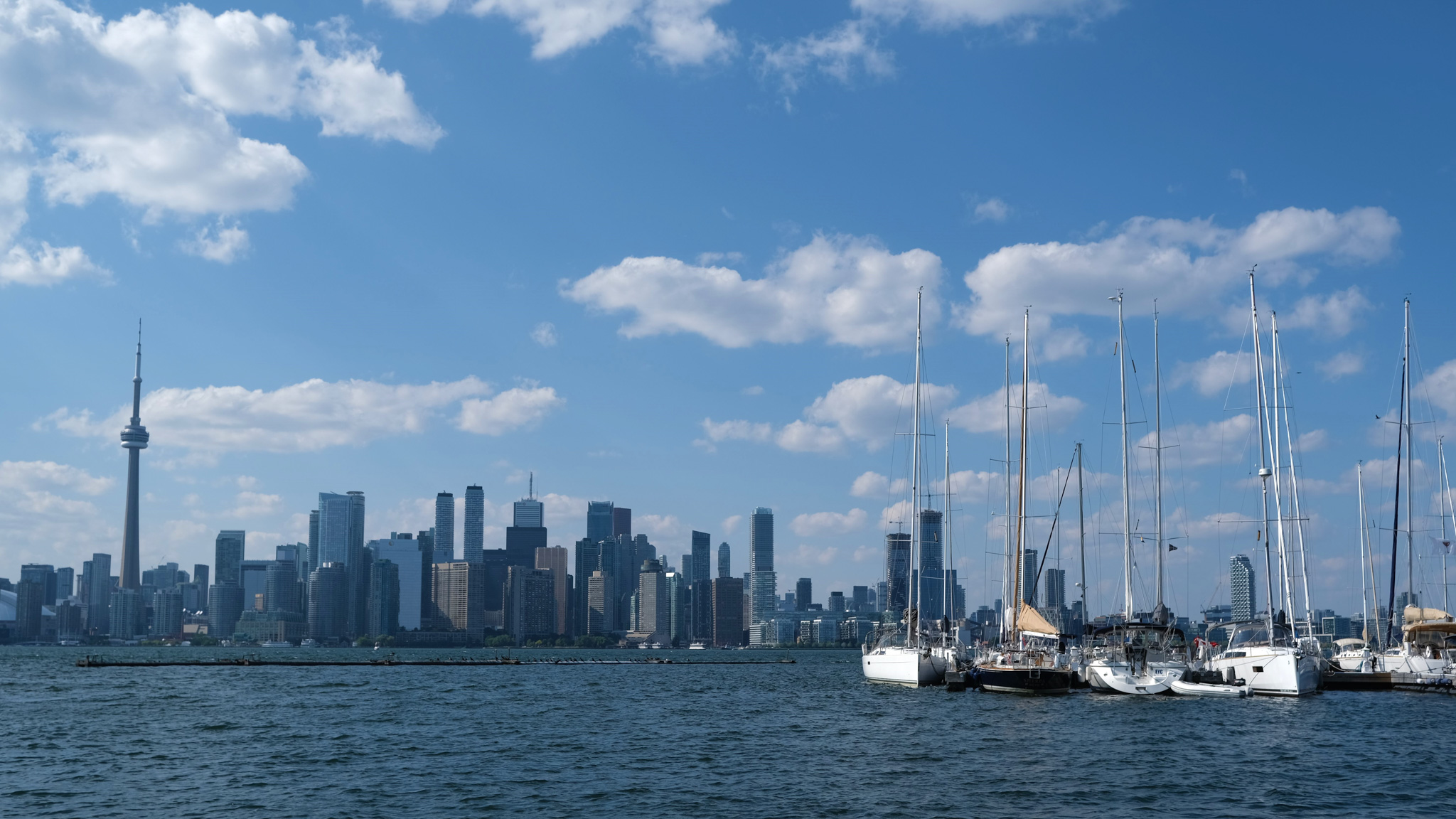
Spinal cord injury is a debilitating condition without a cure. The central problem of addressing human injury lies in solving issues around blunt injury inflicted by bone fragments, leaving centimetre long cavities. The goal of my research is to develop imaging and robotic technology to facilitate the injection of a novel biomaterial bridge, ‘magic goo’, to fill the cavities and guide the regeneration of severed nerve fibres. Using the technology developed during my doctoral studies, the bridge materials will be injected with minimal damage to the injured spinal cord, promoting nerve regeneration and increasing the probability of repair.

My father was a captain on merchant navy ships, and so I grew up in and around boats. I got into competitive sailing during the start of my MASc at BME. Toronto has an excellent harbour with a vibrant sailing community. The people are welcoming and there are a variety of boats you can sail on. I started sailing on smaller boats called ‘dinghies’, crewing for people with more experience than me. Eventually, I moved my way up to the position of skipper (captain) and started racing competitively.

In sailing, you are at the mercy of nature. You constantly have to adapt to changing wind and sea conditions. In a typical race, you are competing against other sailors on a long course across several laps. In order to do well, you have to sail the shortest distance with the maximum possible speed. This requires great a deal of skill and years of experience to perfect.

If you want to compete at the highest level, you have to pay attention to the details. Things like sail trim, steering, boat/sail maintenance, nutrition, strength are some of the important factors to consider. For instance, there are over five different parameters that I can change to affect the sail shape (trim) when sailing. These parameters are changed by tightening or loosening different ropes (sheets) on the sailboat. Moreover, these parameters change based on the wind and sea conditions and whether I’m sailing upwind or downwind. This detail-oriented approach has attracted me to the sport. I’m excited for the life-long learning opportunity that is sailing and honoured to be part of something that our ancestors have been doing for centuries!
There are several similarities between sailing and research. One that is most evident to me is that of constantly having to adapt to whatever nature throws at you. In sailing, one is constantly adapting to changing wind and sea conditions to maximize boat speed for a desired heading. Similarly in research, one constantly has to adapt to information gathered during experiments – be it adapting the design, protocol, or sometimes even the research hypothesis. This constant interaction with nature is deep-rooted both in sailing and in science.



